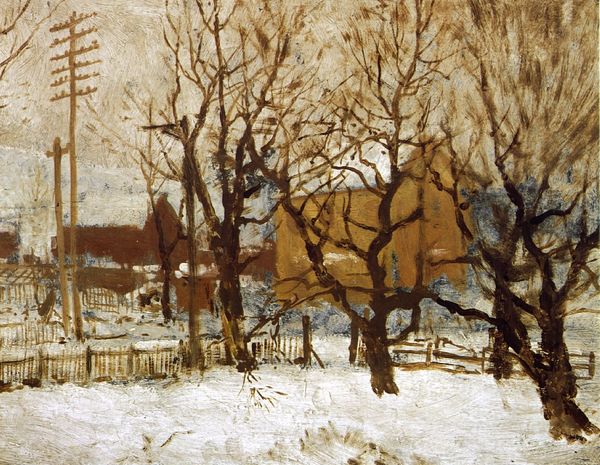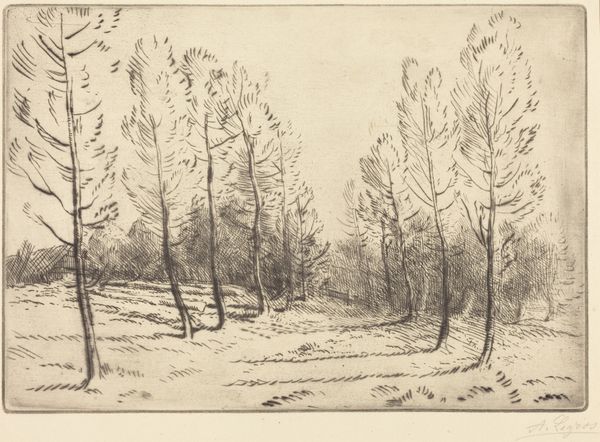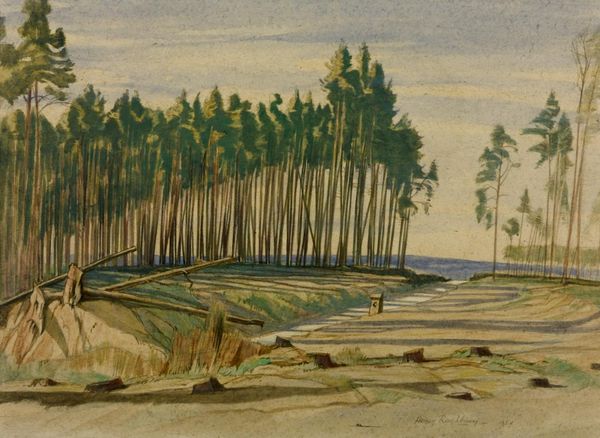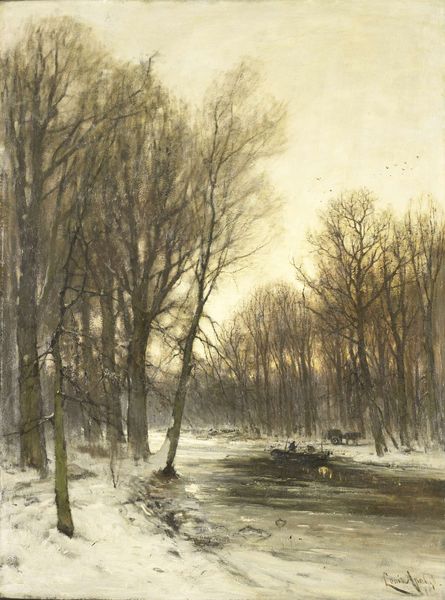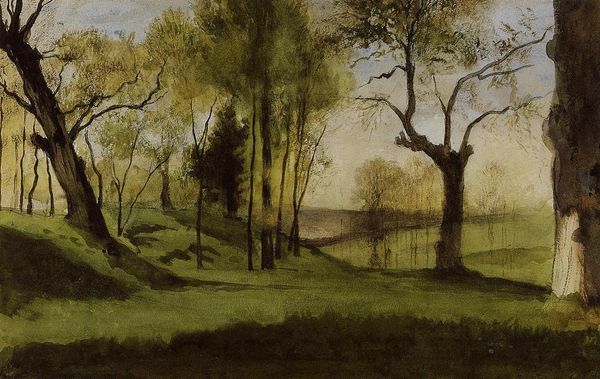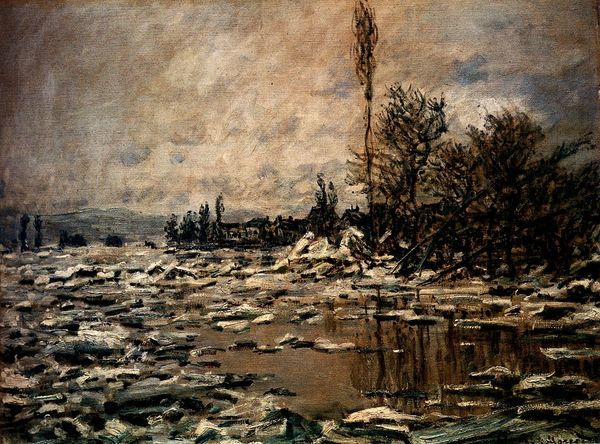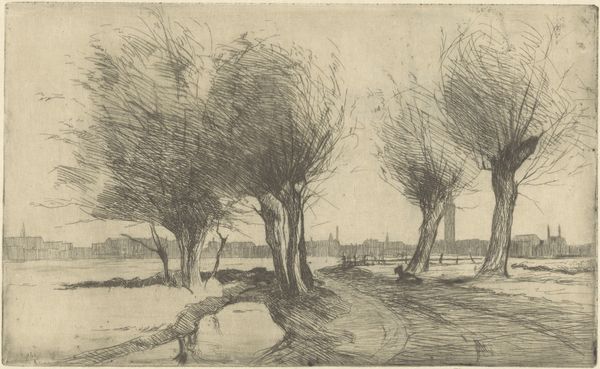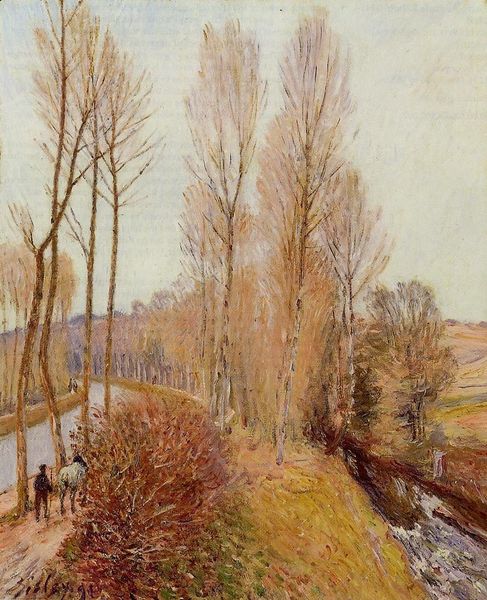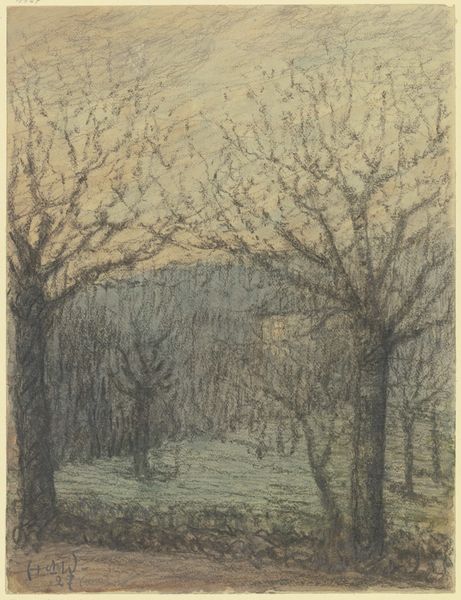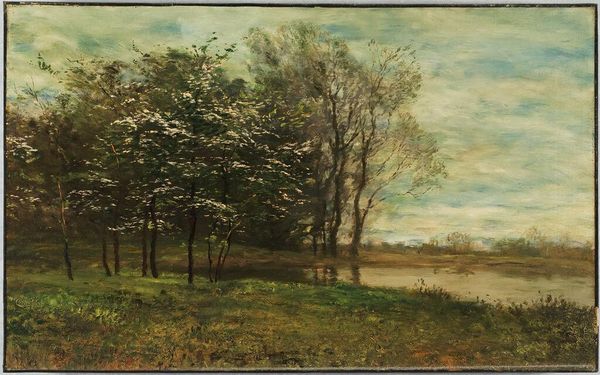
Copyright: Public domain
Curator: This landscape, rendered in charcoal, draws the eye immediately with its contrasting tones. Levitan created it in 1892, offering us a glimpse into his exploration of Russian nature. Editor: Somber, wouldn’t you say? The sharp charcoal work gives a stark feeling to the trees and open spaces. Almost like looking into a forgotten memory. Curator: Interesting choice of words! This work falls within the post-Impressionist movement, yet echoes a strain of romanticism characteristic of late 19th-century Russian art, particularly its engagement with national identity through landscape. Did landscape serve more than just aesthetic purposes? Editor: It makes me think about how public parks and views, once only available to aristocracy, were starting to shape the experience for the wider society, allowing citizens to participate in their nation through spaces that they had previously been excluded from. Curator: Precisely! Consider the vantage point Levitan selected: we are positioned alongside a worn bench, an invitation perhaps for any member of the rising merchant class, or urban professional to partake in an experience of serene contemplation in their natural surroundings. Editor: Levitan’s style feels urgent in its rendering, perhaps echoing a changing social reality for everyday Russians, as he witnessed that historical transformation and poured the weight of his era directly into these charcoal strokes. But I must add, seeing those dark looming trees makes me want to quickly turn back to the familiar warmth of inside, the modern lights! Curator: It captures something real about the shifting moods of the late nineteenth century. Even in natural imagery, you catch undertones reflecting new social realities. It makes me think—where do our perceptions of nature and nation truly overlap, even today? Editor: True. In these landscape sketches, art offers itself to us as an accessible witness.
Comments
No comments
Be the first to comment and join the conversation on the ultimate creative platform.

